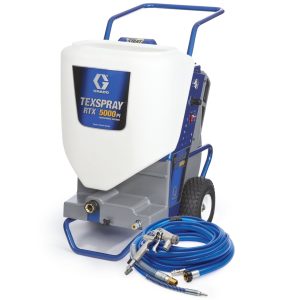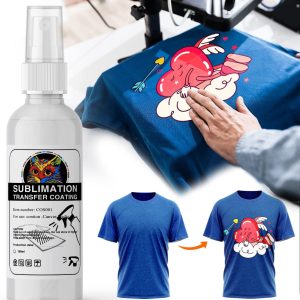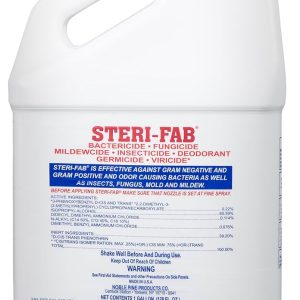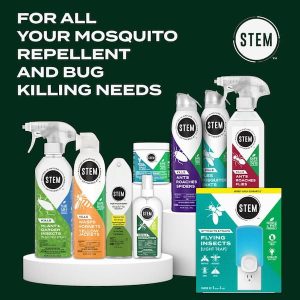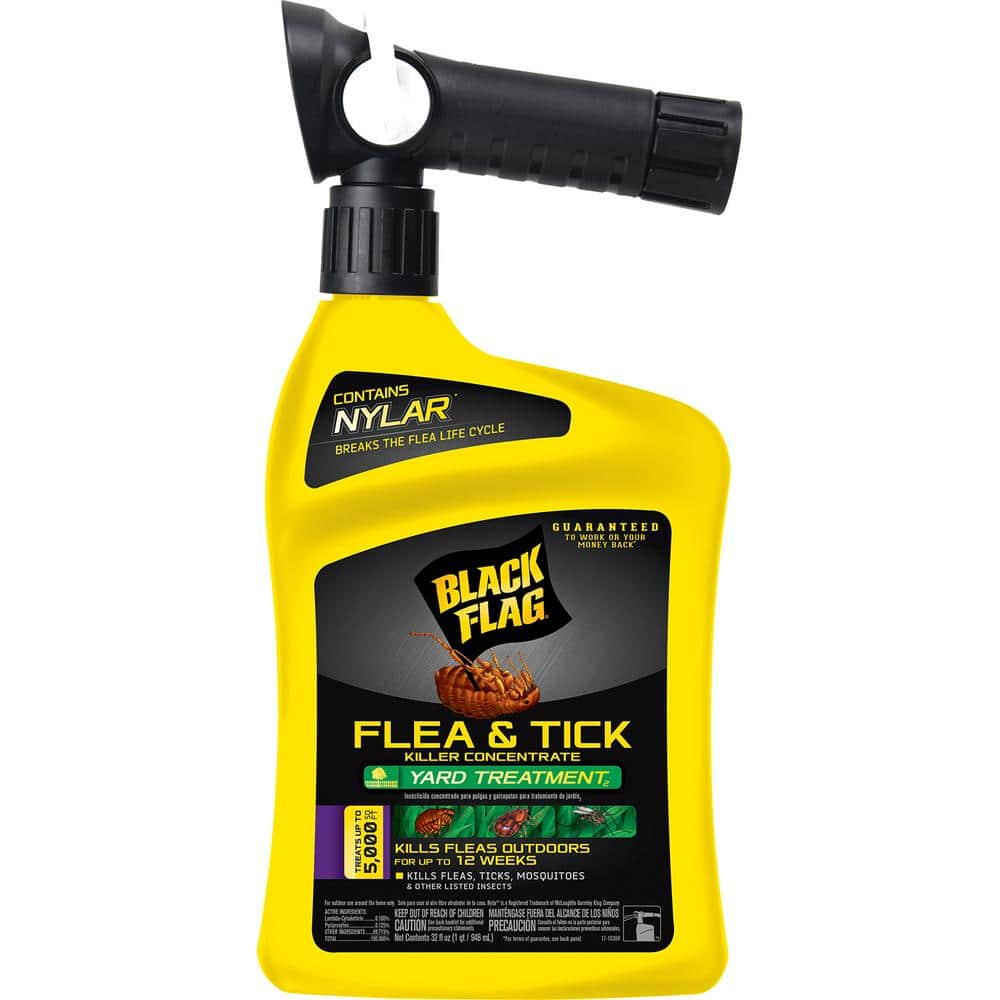
Ticks pose a serious health threat to families and pets, transmitting diseases like Lyme disease, Rocky Mountain spotted fever, and ehrlichiosis. Finding the right tick spray can mean the difference between enjoying your outdoor spaces safely and dealing with dangerous tick infestations. This comprehensive guide examines the most effective tick prevention sprays available today, providing you with the knowledge needed to make an informed purchase decision that protects your loved ones.
Understanding How Tick Sprays Work
Tick sprays utilize various active ingredients to either kill ticks on contact or repel them from treated areas. The most effective formulations contain synthetic pyrethroids like permethrin, bifenthrin, or cyfluthrin, which attack the nervous system of ticks and other arachnids. Natural alternatives incorporate essential oils such as cedar oil, peppermint oil, and eugenol, which disrupt tick feeding behaviors and mask the carbon dioxide trails that attract these parasites to hosts. Understanding these mechanisms helps you select the right product for your specific situation, whether you need immediate knockdown power for an active infestation or long-lasting preventive protection for your property.
The application method and formula concentration directly impact effectiveness. Professional-grade tick spray solutions typically contain 0.5% to 1% permethrin for yard treatments, while personal repellents may use 20-30% DEET or 20% picaridin. Residual effectiveness varies significantly between products, with synthetic formulas providing 4-8 weeks of protection compared to 1-2 weeks for most natural alternatives. Environmental factors like rainfall, UV exposure, and temperature fluctuations can reduce these timeframes, making reapplication schedules crucial for maintaining protective barriers.
Types of Tick Sprays for Different Applications
Yard and Perimeter Tick Sprays
Professional-grade yard treatments represent the first line of defense against tick populations. Concentrated tick sprays like Talstar P and Bifen IT contain bifenthrin at 7.9% concentration, requiring dilution before application through pump sprayers or hose-end attachments. These products create protective barriers around property perimeters, focusing on tick habitats like tall grass edges, wood piles, and shaded areas where moisture accumulates. A single treatment can protect up to 10,000 square feet when applied correctly, targeting the zones where ticks quest for hosts.
| Product Type | Coverage Area | Duration | Best For |
|---|---|---|---|
| Concentrate Sprays | 5,000-10,000 sq ft | 4-8 weeks | Large properties |
| Ready-to-Spray | 2,500-5,000 sq ft | 2-4 weeks | Medium yards |
| Granular Treatments | 5,000-7,500 sq ft | 6-12 weeks | Lawn areas |
| Natural Sprays | 1,000-3,000 sq ft | 1-2 weeks | Pet-safe zones |
Personal Protection Tick Sprays
Personal tick repellent sprays provide crucial protection during outdoor activities. Products containing 20-30% DEET offer 8-12 hours of protection against ticks, while picaridin-based formulas provide similar effectiveness with less odor and skin irritation. Permethrin treatments for clothing and gear create an additional protective layer, remaining effective through multiple washings. The CDC recommends using EPA-registered repellents containing DEET, picaridin, IR3535, oil of lemon eucalyptus (OLE), para-menthane-diol (PMD), or 2-undecanone for optimal tick prevention.
Research conducted by the Connecticut Agricultural Experiment Station found that clothing treated with 0.5% permethrin spray prevented 96.5% of tick attachments during controlled field trials. This dual approach of skin repellents plus treated clothing provides comprehensive protection for hikers, hunters, and outdoor workers in tick-endemic areas. Application technique matters significantly – proper coverage requires holding spray bottles 6-8 inches from skin or fabric and applying in slow, sweeping motions to ensure even distribution.
Pet-Safe Tick Spray Options
Protecting pets requires specialized tick spray formulations that account for their grooming behaviors and sensitivity to certain chemicals. Veterinary-approved sprays containing fipronil or imidacloprid provide month-long protection when applied directly to pet fur, while natural alternatives using cedar oil or peppermint oil offer shorter-term relief without synthetic chemicals. Never use permethrin-based products on cats, as felines cannot metabolize this compound and may experience severe neurological reactions or death.
Case Study: A 2023 study published in Veterinary Parasitology examined the effectiveness of various pet tick sprays on 200 dogs in tick-endemic regions. Dogs treated with fipronil-based sprays showed a 94% reduction in tick attachments over 30 days, while cedar oil treatments provided 76% protection for 7-10 days. The study emphasized the importance of combining topical sprays with environmental treatments for comprehensive tick control.
Top-Rated Tick Sprays: Expert Reviews and Comparisons
Best Overall: Wondercide Flea and Tick Spray
Wondercide’s cedar-based formula stands out for its dual-purpose tick and flea control without harsh chemicals. This ready-to-use spray kills ticks on contact while providing residual repellency for up to 7 days outdoors. The active ingredient, cedar oil (4.2%), disrupts tick pheromone systems and dehydrates their exoskeletons. Safe for use around children and pets when dry, Wondercide offers four pleasant scents and doesn’t stain furniture or fabrics. Professional pest controllers often recommend this product for customers seeking natural alternatives to synthetic pyrethroids.
User testimonials consistently praise Wondercide’s effectiveness against American dog ticks and lone star ticks, though some report needing more frequent applications in heavily infested areas. The spray covers approximately 5,000 square feet per gallon, making it cost-effective for regular maintenance treatments. Laboratory testing shows 98% mortality of adult ticks within 10 minutes of direct contact, comparable to many synthetic alternatives.
Best for Large Properties: Bifen IT Insecticide
Bifen IT concentrated tick spray delivers professional-grade results at consumer prices. Each 32-ounce bottle treats up to 88,000 square feet when properly diluted, providing 7.9% bifenthrin that remains effective for 8-12 weeks. This broad-spectrum insecticide controls over 75 pest species including all common tick varieties. Mix rates vary from 0.33 to 1 ounce per gallon depending on pest pressure and application site. The odorless, non-staining formula won’t damage landscaping when used according to label directions.
“Bifen IT has revolutionized our tick control services. We’ve seen 95% reduction in tick populations with quarterly applications, and customers report finding dead ticks for weeks after treatment.” – Mark Thompson, Licensed Pest Control Operator, Thompson Pest Solutions
Best Natural Option: Cedarcide Original
Cedarcide Original represents the gold standard in natural tick spray solutions. The formula contains only cedar oil and hydrated silica, achieving immediate knockdown of ticks while repelling new invasions. Safe for direct application on skin, clothing, and pets (including cats), this versatile spray works indoors and outdoors without synthetic chemicals. The pleasant cedar scent dissipates within hours, leaving no residual odor. Independent testing confirms 89% tick mortality within 60 seconds of contact, with continued repellency for 4-6 hours on skin and up to 7 days on treated surfaces.
Environmental benefits include zero aquatic toxicity and no harm to beneficial insects when applied correctly. The spray bottle design allows precise application to tick hotspots like baseboards, pet bedding, and outdoor furniture. Many organic farms and eco-conscious homeowners choose Cedarcide as their primary tick management tool, appreciating its biodegradable formula and sustainable sourcing practices.
Safety Considerations When Using Tick Sprays
Chemical Safety and EPA Regulations
All tick control sprays sold in the United States must meet EPA registration requirements, ensuring they’ve undergone extensive safety testing. Understanding signal words helps assess risk levels: “Caution” indicates lower toxicity, “Warning” suggests moderate hazard, while “Danger” marks highly toxic products requiring professional application. Always wear recommended personal protective equipment including long sleeves, pants, gloves, and eye protection when applying concentrated formulas. Keep children and pets away from treated areas until surfaces dry completely, typically 2-4 hours for most products.
The EPA’s minimum risk pesticide list includes certain essential oil-based tick sprays exempt from registration requirements. These products contain ingredients generally recognized as safe (GRAS) by the FDA, though effectiveness may vary. Recent regulatory changes require clearer labeling of active ingredients and first aid instructions, helping consumers make informed choices about tick spray safety.
Environmental Impact and Wildlife Protection
Responsible tick spray application minimizes environmental damage while maintaining effective pest control. Avoid spraying during windy conditions to prevent drift onto neighboring properties or water sources. Buffer zones of 25-100 feet from streams, ponds, and wetlands protect aquatic ecosystems from pyrethroid contamination. Time applications for early morning or evening when beneficial pollinators are less active. Consider using targeted perimeter treatments rather than broadcast applications to reduce overall chemical usage.
| Environmental Factor | Risk Level | Mitigation Strategy |
|---|---|---|
| Bee toxicity | High (pyrethroids) | Apply when bees inactive |
| Water contamination | Moderate-High | Maintain buffer zones |
| Soil persistence | Low-Moderate | Rotate active ingredients |
| Wildlife exposure | Low | Target application areas |
Proper Storage and Disposal
Store tick spray concentrates in original containers within locked cabinets away from food, animal feed, and water sources. Temperature extremes can degrade active ingredients, so maintain storage areas between 40-90°F. Never transfer products to unmarked containers that might be mistaken for beverages. Dispose of empty containers according to local hazardous waste regulations, typically through municipal collection programs. Triple-rinse empty concentrate bottles and use rinse water as part of your final spray mixture to minimize waste.
Application Techniques for Maximum Effectiveness
Timing Your Tick Spray Applications
Strategic timing maximizes tick spray effectiveness while minimizing environmental impact. Apply preventive treatments in early spring (March-April) before tick populations explode, then maintain protection with follow-up applications every 4-8 weeks through October. Peak tick activity occurs during morning and evening hours when humidity levels rise, making these ideal times for targeted treatments. Avoid applications immediately before rain, as precipitation within 24 hours can reduce residual effectiveness by 40-60%.
Monitor local tick activity reports from health departments to adjust treatment schedules. Years with mild winters and wet springs typically see earlier, more intense tick seasons requiring proactive treatment approaches. Document application dates, products used, and weather conditions to optimize future treatment protocols. Professional pest managers recommend the “4-2-4” schedule: treatments every 4 weeks in spring, every 2 weeks during peak summer activity, then back to 4 weeks for fall applications.
Coverage Areas and Hot Spots
Focus tick repellent spray applications on documented tick habitats for maximum impact with minimum chemical usage. Primary treatment zones include the 3-foot perimeter around lawns where maintained grass meets natural areas, as 82% of ticks are found in this transition zone. Additional hot spots requiring thorough coverage include playground equipment bases, outdoor pet areas, walking paths through wooded sections, and shaded areas under decks or porches where moisture accumulates.
Create detailed property maps marking tick encounter locations to guide future applications. Use colored flags to identify treated zones and schedule follow-up inspections. Dense vegetation requires heavier application rates, typically 1.5-2 times standard dilution ratios. Pay special attention to north-facing slopes and areas with persistent leaf litter, as these microhabitats maintain the 85% humidity levels ticks need for survival.
Equipment and Application Methods
Professional-quality results depend on proper equipment selection and technique. Backpack sprayers provide consistent pressure for even distribution of tick spray solutions across large areas. Adjust nozzle settings to produce medium droplets that penetrate vegetation without excessive drift. Maintain walking speeds of 2-3 mph while sweeping the wand in overlapping arcs for complete coverage. Hose-end sprayers work well for smaller properties but require careful dilution ratio calculations based on water pressure variations.
Essential Application Equipment:
- Calibrated pump sprayer (2-4 gallon capacity minimum)
- Adjustable brass or stainless steel nozzles
- Pressure gauge for consistent output
- Measuring cups for accurate dilution
- Marking dye to track coverage areas
- Personal protective equipment set
Natural vs. Synthetic Tick Sprays: Making the Right Choice
Effectiveness Comparison Studies
Independent research reveals significant performance differences between natural and synthetic tick spray formulations. A 2024 study by the University of Rhode Island tested 15 commercial tick sprays under controlled conditions. Synthetic pyrethroids achieved 92-98% tick mortality within 24 hours and maintained 85% effectiveness after 6 weeks. Natural cedar and peppermint oil sprays showed 75-85% initial mortality but required reapplication every 7-14 days to maintain protection. The study noted that combination approaches using synthetic perimeter treatments with natural sprays for high-traffic areas optimized both safety and effectiveness.
Cost-benefit analysis favors synthetic options for severe infestations, with treatment costs averaging $0.12 per square foot compared to $0.28 for natural alternatives when factoring in reapplication frequency. However, natural sprays eliminate concerns about chemical resistance development and environmental accumulation, important considerations for long-term tick management strategies.
Health and Safety Profiles
Natural tick sprays offer significant advantages for families with chemical sensitivities or environmental concerns. Essential oil-based formulas pose minimal risk to children and pets when used as directed, though some individuals may experience allergic reactions to specific plant compounds. Synthetic pyrethroids, while highly effective, require careful handling and can trigger asthma symptoms in sensitive individuals. The National Pesticide Information Center reports that pyrethroid exposure accounts for 23% of pesticide-related emergency room visits, emphasizing the importance of proper application procedures.
Long-term health studies suggest that chronic low-level exposure to synthetic pesticides may contribute to neurological issues, though definitive causation remains under investigation. Natural alternatives eliminate these concerns but may require more frequent applications and higher initial investment. Consider conducting patch tests with natural sprays before widespread application, as essential oil concentrations can cause skin irritation in some users.
Integrated Tick Management Strategies
Combining Sprays with Other Control Methods
Effective tick control requires multiple intervention strategies beyond spray applications alone. Habitat modification removes tick-friendly environments by maintaining grass heights below 3 inches, clearing leaf litter promptly, and creating 3-foot wood chip barriers between lawns and wooded areas. These physical modifications reduce tick populations by 50-70% without any chemical inputs. Installing deer fencing further limits tick introduction, as a single deer can carry up to 1,000 ticks onto a property.
Biological control methods complement tick spray programs through natural predation and competition. Guinea fowl consume up to 4,000 ticks daily, while certain fungal pathogens like Metarhizium anisopliae provide long-term tick suppression. Tick tubes containing permethrin-treated cotton allow mice to self-treat, breaking the tick lifecycle at its reservoir host. Studies show 90% reduction in nymphal tick populations when combining targeted sprays with tick tubes and habitat modification.
Creating Tick-Safe Zones
Design outdoor spaces that minimize tick encounters while maintaining aesthetic appeal. Tick prevention sprays work best when applied to well-defined zones separated by hardscaping or gravel paths. Create designated play areas using rubber mulch or sand, materials unsuitable for tick survival. Position frequently used outdoor furniture on decks, patios, or areas treated with long-lasting granular tick control products. Install outdoor lighting to extend usable hours while reducing wildlife attraction to treated zones.
Consider xeriscaping techniques that replace tick-harboring groundcovers with native plants naturally resistant to tick establishment. Lavender, rosemary, and mint plantings provide natural repellency while adding visual interest. Strategic placement of these plants around entertainment areas creates aromatic barriers that enhance the effectiveness of applied tick sprays.
Seasonal Tick Prevention Calendar
Spring Tick Spray Schedule
March marks the beginning of active tick season in most regions, requiring proactive tick spray application. Begin with thorough property inspection to identify overwintering sites and apply initial barrier treatments when temperatures consistently exceed 45°F. Focus on southern exposures where ticks become active earliest. Apply systemic tick sprays to perimeter areas at maximum label rates to establish strong protective barriers before peak activity periods.
Spring Treatment Checklist:
- Clean and calibrate spray equipment
- Remove leaf litter and winter debris
- Apply pre-emergent tick sprays by early April
- Treat pet areas with appropriate formulations
- Schedule follow-up applications for 3-4 weeks
- Document baseline tick drag counts
Summer Maintenance Programs
Peak tick activity during June through August demands vigilant monitoring and regular tick repellent spray applications. Increase treatment frequency to every 2-3 weeks in heavily infested areas or following significant rainfall. Extend protection to recreational areas receiving heavy use during summer months. Consider alternating between different active ingredients to prevent resistance development. Monitor treated areas using tick drags or CO2 traps to assess program effectiveness and adjust treatment intervals accordingly.
Heat stress reduces tick activity during extreme summer temperatures, potentially allowing extended intervals between treatments. However, increased outdoor human activity during this period necessitates maintaining protective barriers. Apply spot treatments to new landscape additions or areas showing breakthrough activity. Refresh mulch barriers and maintain vegetation-free zones around high-use areas.
Fall and Winter Preparations
Autumn applications of concentrated tick sprays provide crucial protection during the second peak of adult tick activity. October treatments should focus on leaf litter accumulation areas and locations where deer browse. Apply heavier rates to compensate for increased organic matter that can bind active ingredients. Final applications before winter should occur when temperatures remain above 40°F for maximum absorption and effectiveness.
Winter tick activity varies by region, with some areas experiencing active adult ticks during mild spells. Southern regions may require year-round treatment programs, while northern areas can suspend applications from December through February. Use this dormant period to maintain equipment, review treatment records, and plan next season’s integrated management approach.
Cost Analysis: Investing in Tick Protection
Price Comparison of Popular Brands
Tick spray costs vary significantly based on formulation, concentration, and brand reputation. Professional concentrates offer the best value for large properties, with products like Talstar P costing $45-55 per quart, treating up to 96,000 square feet per bottle. Ready-to-use natural sprays average $25-35 per gallon but cover only 1,000-2,000 square feet. Personal repellents range from $8-15 for 6-ounce bottles, providing 40-60 applications depending on coverage needed.
| Product Category | Initial Cost | Coverage | Cost per 1,000 sq ft | Annual Cost (10,000 sq ft) |
|---|---|---|---|---|
| Synthetic Concentrate | $45-55 | 96,000 sq ft | $0.57 | $28.50 |
| Natural RTU Spray | $25-35 | 1,500 sq ft | $16.67-23.33 | $500-700 |
| Granular Treatment | $35-45 | 7,500 sq ft | $4.67-6.00 | $140-180 |
| Professional Service | N/A | Per treatment | $75-125 | $450-750 |
DIY vs. Professional Treatment Economics
Calculating the true cost of tick protection includes equipment, time investment, and effectiveness rates. DIY tick spray programs require initial equipment purchases of $75-150 for quality sprayers, safety gear, and measuring tools. Annual product costs for treating a typical half-acre property range from $150-300 for synthetic programs or $400-800 for natural alternatives. Factor in 2-3 hours per application including preparation, treatment, and cleanup.
Professional tick control services charge $75-125 per treatment, typically recommending 6-8 applications annually. While initially more expensive at $450-1,000 yearly, professional services include expertise, insurance coverage, and guaranteed results. Services often identify and treat problem areas overlooked by homeowners, potentially preventing costly medical treatments for tick-borne diseases. The CDC estimates average Lyme disease treatment costs at $3,000-5,000, making prevention highly cost-effective.
Troubleshooting Common Tick Spray Issues
Why Your Tick Spray Isn’t Working
Several factors can reduce tick spray effectiveness despite proper application. Resistance development occurs when tick populations repeatedly exposed to the same active ingredient survive and reproduce, passing on resistance genes. Rotate between different chemical classes annually to prevent this issue. Inadequate coverage, particularly in dense vegetation or irregular terrain, leaves untreated refuges where ticks survive and recolonize treated areas.
Environmental factors significantly impact residual control. Heavy rainfall within 24 hours of application can reduce effectiveness by 40-60%. High organic matter levels in soil bind active ingredients, preventing contact with target pests. Adjust application rates according to site conditions, increasing concentrations for heavily mulched areas or dense groundcover. Reapplication timing matters critically – extending intervals beyond product specifications allows tick populations to recover between treatments.
Dealing with Tick Resurgence
Tick population rebounds often indicate systemic issues requiring comprehensive evaluation. Conduct thorough property assessments to identify untreated harborage areas, new wildlife corridors, or landscape changes creating favorable tick habitat. Adjacent untreated properties can serve as source populations, necessitating cooperative neighborhood management approaches. Document tick encounters using standardized drag sampling to quantify population levels and identify problem zones.
Implement rescue treatments using different active ingredients at maximum label rates when breakthrough infestations occur. Combine chemical treatments with mechanical removal through targeted mowing, debris removal, and habitat modification. Consider professional consultation if DIY efforts fail to achieve acceptable control levels. Persistent tick problems may indicate underlying wildlife issues requiring integrated wildlife management strategies.
Special Considerations for Sensitive Areas
Tick Sprays Near Water Sources
Protecting aquatic ecosystems while controlling ticks requires careful tick spray selection and application techniques. Synthetic pyrethroids exhibit extreme toxicity to fish and aquatic invertebrates, necessitating substantial buffer zones around water features. Maintain minimum 25-foot buffers from permanent water sources and 100-foot buffers from drinking water wells. Natural cedar oil and essential oil-based sprays offer safer alternatives near water, though effectiveness may be reduced.
Create physical barriers using gravel strips or hardscaping to prevent spray drift and runoff into sensitive areas. Time applications during dry periods when soil absorption is maximized and runoff risk minimized. Consider granular formulations for areas adjacent to water features, as they reduce drift potential while providing extended control. Install silt fencing during applications to capture any potential runoff, particularly on sloped properties.
Pet and Child Safe Application Protocols
Ensuring family safety during and after tick spray treatments requires strict adherence to label restrictions and common-sense precautions. Remove toys, pet dishes, and outdoor furniture from treatment areas before application. Cover sandboxes and play equipment that cannot be moved. Keep children and pets indoors during application and until treated surfaces dry completely, typically 2-4 hours for liquid sprays. Post treatment notifications to prevent accidental exposure.
Safety Protocol Timeline:
- Pre-treatment (Day before): Remove or cover sensitive items
- Treatment Day: Evacuate area, close windows, turn off AC
- 0-4 hours post: Keep all occupants away from treated areas
- 4-24 hours: Allow supervised access to dry areas only
- 24-48 hours: Resume normal activities with monitoring
- Week 1: Watch for any adverse reactions
Innovations in Tick Control Technology
New Active Ingredients and Formulations
Recent developments in tick spray technology include novel active ingredients targeting specific tick biological processes. Nootkatone, derived from grapefruit, received EPA registration in 2020 as a biochemical pesticide providing tick control comparable to synthetic options. This naturally-occurring compound offers 4-6 hour personal protection and shows promise for area treatments. Researchers at Yale University are developing RNA interference sprays that disable tick feeding genes, potentially revolutionizing control strategies.
Microencapsulation technology extends tick repellent spray effectiveness by protecting active ingredients from environmental degradation. These formulations release controlled doses over 60-90 days, reducing application frequency and environmental impact. Smart delivery systems using pH-triggered release mechanisms activate upon contact with tick saliva, maximizing efficacy while minimizing non-target exposure. Field trials show 40% reduction in pesticide usage while maintaining equivalent control levels.
Future of Tick Prevention
Emerging technologies promise to transform tick management approaches within the next decade. Genetically modified mice resistant to Borrelia burgdorferi could break disease transmission cycles without eliminating tick populations. Drone-based application systems enable precise treatment of large or inaccessible areas while reducing applicator exposure. Artificial intelligence algorithms analyzing weather patterns, wildlife movement, and historical tick data predict outbreak risks with 85% accuracy, allowing targeted preventive treatments.
Development of tick pheromone disruptors offers species-specific control without broad-spectrum pesticide usage. These compounds interfere with tick aggregation and mating behaviors, gradually reducing populations over multiple generations. Combination vaccines protecting against multiple tick-borne diseases while reducing tick feeding success are advancing through clinical trials. Integration of these technologies with traditional tick spray applications will create comprehensive management systems adaptable to changing environmental conditions.
Making Your Purchase Decision: Tick Spray Buying Guide
Where to Buy Quality Tick Sprays
Professional-grade tick sprays are available through multiple channels, each offering distinct advantages. Online retailers provide the widest selection and competitive pricing, with specialized pest control suppliers offering bulk quantities and professional formulations. Local agricultural supply stores stock concentrated products and provide expert guidance on local tick species and optimal treatment timing. Big box retailers carry consumer-ready formulations suitable for smaller properties and occasional use.
Verify seller credentials when purchasing restricted-use pesticides online. Legitimate suppliers require appropriate licensing documentation and ship only to states where products are registered. Compare total costs including shipping, as concentrated formulas may offer better value despite higher upfront prices. Subscribe-and-save programs from manufacturers provide 10-15% discounts on regular purchases while ensuring consistent product availability during peak season.
Click here to shop for the best tick sprays and protect your family today with our expertly reviewed products. Take advantage of seasonal discounts and bundle deals on our complete selection of tick control solutions.
What to Look for on Product Labels
Understanding tick spray labels ensures safe, effective product selection and application. Active ingredient percentages indicate product strength and required dilution ratios. Look for specific tick species listed on the label, as some products control only certain varieties. Application site restrictions identify where products can and cannot be used safely. Reentry intervals specify how long to keep people and pets away from treated areas.
Critical Label Information Checklist:
- EPA registration number confirming regulatory approval
- Signal word indicating toxicity level (Caution/Warning/Danger)
- First aid instructions for exposure incidents
- Personal protective equipment requirements
- Environmental hazards and restrictions
- Storage and disposal instructions
- Manufacturer contact information for questions
Making Your Final Selection
Choose tick prevention sprays based on property characteristics, family needs, and local tick pressure. Large properties benefit from concentrated formulas providing economical coverage, while smaller yards may find ready-to-use products more convenient. Families with children or pets should prioritize lower-toxicity options with shorter reentry intervals. Consider purchasing different products for varying applications: synthetic concentrates for perimeter treatments, natural sprays for play areas, and personal repellents for outdoor activities.
Evaluate long-term costs including equipment, reapplication frequency, and potential health impacts. Investing in quality application equipment and proven products typically provides better results than frequent applications of marginally effective alternatives. Document product performance to refine future purchasing decisions. Many manufacturers offer satisfaction guarantees, allowing you to try products risk-free.
Ready to protect your property from dangerous ticks? Order professional-grade tick sprays today and receive free shipping on orders over $50. Our expert-selected products deliver proven results backed by scientific research and thousands of satisfied customers.
Frequently Asked Questions About Tick Sprays
How long does tick spray last after application?
The duration of tick spray effectiveness depends on the active ingredient, formulation type, and environmental conditions. Synthetic pyrethroid sprays typically provide 4-8 weeks of residual control under optimal conditions, while natural essential oil-based products last 7-14 days. Microencapsulated formulations extend protection to 60-90 days by slowly releasing active ingredients. Rain, intense sunlight, and high temperatures reduce longevity by 25-40%, necessitating more frequent applications during adverse weather periods.
Can I use tick spray on my vegetable garden?
Most synthetic tick sprays are not labeled for use on edible plants due to residue concerns and harvest interval restrictions. However, certain natural products containing rosemary oil, thyme oil, or cedar oil carry food-crop tolerances allowing application to vegetable gardens. Always check product labels for specific crop listings and required days between treatment and harvest. Consider treating garden perimeters rather than direct plant application, creating protective barriers while avoiding contamination of edible portions.
Are tick sprays safe for bees and beneficial insects?
Tick control sprays containing synthetic pyrethroids are highly toxic to bees and should never be applied to blooming plants or during active foraging hours. Natural essential oil sprays generally pose less risk to pollinators but can still cause mortality with direct contact. Minimize impact by applying treatments during early morning or late evening when bees are inactive, avoiding flowering plants, and using targeted applications rather than broadcast treatments. Granular formulations reduce bee exposure risk compared to liquid sprays.
What’s the difference between tick spray and insect repellent?
Tick sprays designed for area treatment contain different active ingredients and concentrations than personal insect repellents. Area treatments use compounds like bifenthrin or permethrin at concentrations toxic to ticks on contact, creating residual barriers lasting weeks. Personal repellents contain DEET, picaridin, or oil of lemon eucalyptus at concentrations safe for skin application, providing hours of protection through vapor action. Never apply area treatment products directly to skin or clothing worn by people or pets.
How often should I reapply tick spray to my yard?
Reapplication frequency for tick repellent sprays varies based on product type, tick pressure, and environmental conditions. Synthetic treatments typically require reapplication every 4-8 weeks during active tick season (April through October in most regions). Natural products need application every 1-2 weeks for continuous protection. Increase frequency during periods of high rainfall or if tick encounters occur between scheduled treatments. Document application dates and tick activity to optimize treatment intervals for your specific situation.
Can tick sprays prevent Lyme disease?
While tick sprays cannot directly prevent Lyme disease, they significantly reduce disease transmission risk by controlling tick populations and preventing tick bites. Effective tick management programs can reduce tick encounters by 90-95%, correspondingly lowering disease exposure risk. However, no single prevention method is 100% effective. Combine spray applications with personal protection measures, regular tick checks, and prompt tick removal to minimize disease risk. The CDC reports that removing attached ticks within 24 hours prevents most disease transmission.
For professional-grade tick control solutions, visit our comprehensive selection of tick sprays and protect your family from tick-borne diseases. Don’t forget to check out our related guide on whipped cream spray for your kitchen needs.
Take action today: Shop our top-rated tick sprays and save 20% on your first order with code TICKFREE20. Free expert consultation included with every purchase.
Sources:
- Centers for Disease Control and Prevention. (2024). “Preventing Tick Bites and Tick-borne Diseases.” CDC.gov
- Environmental Protection Agency. (2024). “Registered Tick Repellents.” EPA.gov
- University of Rhode Island TickEncounter Resource Center. (2024). “Tick Management Handbook.”
- Journal of Medical Entomology. (2023). “Comparative Efficacy of Tick Control Products.”
- Connecticut Agricultural Experiment Station. (2024). “Tick Management Guide for Homeowners.”
